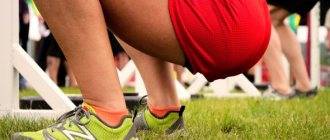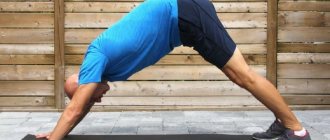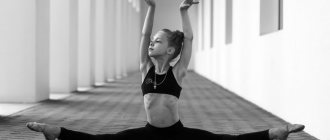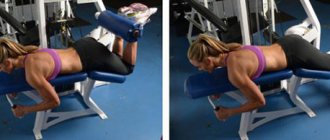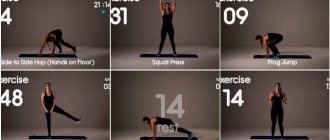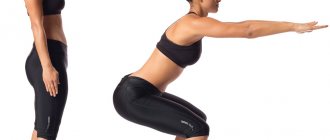Everyone wants to look attractive for the beginning of the summer season. This is why abdominal training is of great importance. The best abdominal exercises can be performed independently at home or in gyms under the supervision of an instructor.
According to the majority, the last option at the initial stage of preparation is the most appropriate. A specialist will help you choose the best press.
Exercise 5: Bust Twist
And here is a timeless classic for stretching the muscles of the buttocks and side of the leg. With great calm and approaching where possible, sit with your legs extended, bend one leg and bring your foot into your back next to the knee of your extended leg on the outside. Almost cross one leg over the other.
Hanging Leg Raise
Always 20 seconds for 3 reps per leg. As you can see, these exercises to combat pregnancy sciatica pain are really simple. So trivial how effective. Whether or not you have an abdominal area with clear muscle separation depends first on your genes, then on the diets you follow, and then on the workout in the room. The hierarchy of determining factors is as follows. Guided by the principle that you first need to realize your mistakes in order to correct them, today we have made a small selection of the most common mistakes that are made in abdominal relief exercises.
Myths about stretching
- Pain is an integral part of stretching. For many, the main reason not to stretch is not the lack of results or time for exercise, but the feeling of sharp pain. From one point of view, everything is logical. The muscles are stretched, which is why it hurts. But is it necessary to endure pain? It is important to understand that pain is a natural reaction of the nervous system to traumatic actions. If you feel a sharp pain while doing an exercise, this means that you are about to stretch or tear something ;
- Stretching lengthens muscles and tendons. The length can only change under very strong mechanical stress. But we are not talking about intentionally inflicted injuries, but about increasing the plasticity of the tissue, its ability to secure a new shape. Stretching exercises do not lengthen muscles and tendons, but make them tolerant of strong stretching forces;
- Stretching burns fat. Stretching improves metabolism, which is a prerequisite for losing weight. When blood circulation is activated, body tissues receive more nutrients. Stretching makes the muscles more prominent by receiving important elements and “pumps” them faster. Stretching itself will not help burn fat, but if you stretch after a workout, it will enhance the fat burning effect.
Basic rule for success
What is the most important thing for those who want to get a beautiful tummy and lose excess weight? This can be achieved by following the principles of a healthy diet and performing special exercises for weight loss (aerobics, exercises in water, etc.) or exercising on exercise machines in the gym. With the help of such actions, excess fat is removed from the sides and abdomen.
Mistake #1 Bend your stomach every day. Bone tiles are just one small muscle group in the body and therefore should be trained in the same way as biceps, chest or quads are trained - at least 1-2 days. Mistake #2 Abdominal presses are absolutely necessary. Abdominals are the most famous, but not the best exercise for this part of the body. If you want to attack your abdominal muscles from every possible angle, try challenging, high-impact exercises like scorpion tails, leg lifts from your hips, or stallion-to-pike abs.
Training can be done every day, but for better results it is important to alternate days with intense training with days when 1-2 abdominal exercises are performed during the main corrective (morning) exercises. Due to such alternations, a gentle load is placed on the abdominal muscles, which at the same time does not allow them to relax, constantly keeping them in good shape, but not overloading.
Mistake #3. The slower the exercise, the more muscle. This rule certainly applies to training some other parts of the body where muscle contraction is a key factor in muscle growth. However, according to a Spanish study, the situation with the belly is different. Rapid repetitions of abdominal exercises appear to significantly increase muscle activity in both the anterior and posterior abdominal rectal walls in the abdominal hindbrain. For maximum effect when forming the relief of the abdominal muscles, it is best to change the speed of execution and the number of repetitions in the series.
To achieve good results and not harm the body, it is important to monitor your breathing. During a power load - squeezing muscles - you need to exhale sharply through your mouth, and when relaxing your muscles, inhale air slowly and deeply through your nose.
The best exercises for the lower abs involve raising your legs straight from a lying position and moving them to the sides. These exercises must be repeated in 3 sets, at least 12 repetitions in each direction.
Mistake No. 4 Complete elimination of carbohydrates Carbohydrates are an indispensable source of energy for the body. It is a misconception to think that consuming them automatically results in rounding and hiding the abdominal tiles. It is important to differentiate between types of carbohydrates. Simple carbohydrates that are quickly digested cause a spike in insulin, which prevents fat loss. The only appropriate time to take these foods is immediately after finishing your workout, when their energy is quickly used to repair the body.
On the contrary, complex slow carbohydrates improve metabolic rate and create a long-term feeling of fullness. Mistake #5 Long-term training cannot compensate for poor nutrition. Unfortunately, even if you spend the night at the gym, you still won’t be able to neutralize the negative impact on your abdominal shape by regularly eating pasta, fatty, salty or chocolate temptations. Even if you have a habit of eating well, you still need to be very careful with the size and number of portions, as it can be easy to skimp on calories and only eat healthy foods.
Features of stretching
Stretching can be done either in groups with a trainer or independently. The main thing is to learn the correct technique for performing all exercises and not get injured. To do this, you need to remember a few rules.
- The purpose of the warm-up is to prepare the joints and muscles. A high-quality warm-up will help not only reduce the risk of injury, but also make the stretching itself painless and comfortable;
- Breathing affects the muscles' access to nutrients and oxygen. When you hold your breath, muscle tension increases, which definitely cannot be useful during stretching;
- Regularity . It is much better to spend about 20 minutes stretching every day rather than spend an hour several times a week hoping for instant results. Intensity without regularity results in slower progress;
- Don't overload or overstretch the same muscle group. “Clogged” muscles will, on the contrary, return to their original shape.
Benefits of Pilates
To ensure the effectiveness of this area of fitness, it is worth getting acquainted with its main advantages:
- the abdominal and back muscles are strengthened, which has a positive effect on the functioning of the spinal column, and also allows you to make your tummy flat;
- the spinal column is stabilized;
- regular exercise helps strengthen all the muscles of the body;
- Pilates was created for the rehabilitation of injured athletes and is therefore practically safe for the body;
- posture improves, which is visually noticeable;
- learn to control your breathing and your body will never experience oxygen deficiency;
- Thanks to the deep breathing technique, stress is relieved;
- body flexibility and performance of the articular-ligamentous apparatus improves;
- blood pressure decreases;
- Great for people of any age;
- There are complexes that can be performed during pregnancy.
Types of stretching
- Static stretching. The essence of static stretching is to stay in a position for a period of 30 to 60 seconds;
- Passive stretching. Very similar to static stretching, only performed with a trainer;
- Dynamic stretching. Stretching that occurs in motion;
- Ballistic stretch. All exercises are based on the principle of inertia and stretching occurs in the process of sudden jumps and swings;
- Active isolated stretching. In this technique, each muscle is worked separately, isolated from others;
- Isometric stretching. Relaxation occurs after tension - the main principle of isometric stretching. Contraction of muscle tissue suppresses the protective stretch reflex.
Individual load calculation
If you are not training under the guidance of an instructor, you need to learn how to calculate the training load yourself. To do this, refer to the method below.
Before training, the heart rate is calculated and the permissible load is determined - the age of the trainee is subtracted from the number “220”. People who are over 45 years of age subtract the number of their years from two hundred. The result obtained will be the maximum allowable heart rate (HR).
For physical education (recreational), the pulse should not exceed the permissible heart rate:
- during warm-up: 50/60%;
- in the main part of the training: 65/70%.
At the end of the training session, it is recommended to perform several relaxation exercises. After 5/7 minutes, the pulse should return to normal.
You should always pay attention to your well-being. Do not train “to the point of exhaustion”; at the end of the training there should be a desire to continue it.
Before starting classes, be sure to undergo a medical examination, since functional training almost always involves heavy stress on the heart, spine and joints.
A set of stretching exercises for all muscle groups at home
- Neck. Stand up straight and place your right hand on your forehead. Tilt your head back, then towards your right shoulder.
- Shoulders. Press your right hand to your left shoulder, and with your left hand press your right hand at the elbow. Change hands and do the exercise again.
- Breast. Stand next to a doorway with one foot in front of the other. With your left hand, rest against the opening, bend at an angle of 90 degrees. Transfer your body weight to your hand and lean forward slightly. Keep your back straight and turn your head in the opposite direction to increase the load. Stay in this position for 30 seconds, then change your hand and perform exercises on the other side.
- Biceps. Stand next to the doorway, grasp the doorframe with one hand at shoulder level. Do not unclench your hand and twist your arm so as to turn your biceps upward. The rotation of the arm should occur around its axis, and not around the shoulder. Repeat the exercise.
- Triceps. Stand up, place one hand behind your head, and clasp your elbow with your free hand. Reach your hand towards your head. Stay in this position for a while, and then repeat the exercise with the other hand.
- Gluteal muscles. Lie on your back with your left knee bent and your right ankle on top of your knee. Wrap your hands around the back of your left thigh and pull your legs toward your chest. Place your right elbow inside your right knee. Repeat the exercise with the other leg.
- Outer thigh. Sit on the floor and straighten one leg straight in front of you. Bend the other leg at the knee, crossing it with the straightened leg so that the foot of the bent leg rests flat on the floor. Grasp the knee of the bent leg with the elbow of the opposite hand. Straighten your chest and turn your body as much as possible. Hold the position for 20 seconds. Repeat the exercise on the other side.
- Hamstring. Take a sitting position with your leg extended out to the side. Don't bend your knee and reach your palm toward the base of your foot. Pull your thumb towards you. Maintain this position for 20 seconds and alternate legs.
- Quadriceps. Bend your leg at the knee, clasping your shin with your hand. Stretch your heel as close to your buttocks as possible. Hold for 40 seconds, change legs and repeat the exercise.
- Caviar. Step one leg forward. Bend your knees without lifting your heels. Feel the tension in the back of your calves. Hold for 10 seconds, then change legs.
- Upper back. Take a sitting position with your hands behind your head. Arch your spine, tilting your head forward. Bend over until your elbows touch your hips. Hold this position for 10 seconds, then repeat the exercise five more times.
- Lower back. Take a lying position, pulling your knees to your chest. Wrap your hands around your knees and slowly pull your knees towards your shoulders.
A set of stretching exercises for all muscle groups at home
- Child's pose. Take a sitting position, kneel down. Feet hip-width apart. Move your pelvis back and lower your buttocks onto your heels. Place your hands on the floor, stretching forward. Lower your head to the floor. Relax your body and hold the pose for as long as possible.
- Runner's lunges. From the starting position, lunge forward with one leg. Hold this position, then straighten your front leg. Pull the toe of your front foot towards you.
- Seated crunches. Sit on the floor, keep your legs straight. Bend your right knee and cross your right leg behind your left. Place your left elbow on your right knee and gently stretch. Hold for 30 seconds, return to the starting position. Repeat the exercise on the other side.
- Leg spread. Take a lying position. Stretch your arms along the body, throw your legs up perpendicular to the body. As you inhale, spread your legs apart, do not bend your knees. Fix at a comfortable point, but feel the tension. As you exhale, return to the starting position. Perform 3 sets of 20 repetitions.
- Four twist. Place your right foot on your left knee, bending your legs into a figure 4 shape. Next, you should grab your left leg with your hands and pull it closer to your chest. Keep your right knee bent to the right. Hold for 5 deep breaths and switch sides.
- Bend forward. Stand up straight with your feet shoulder-width apart and your back straight. Tighten your abs and lower your body down, rotating at the hip joints. Hold at the bottom for a couple of seconds and return to the starting position.
- Cow's head. Sit on your buttocks and bend your knees. Place your left foot under your right knee and place it to the right of your pelvis. Bring your right foot behind your left knee and place it on the floor to the left side of your pelvis. Place your knees one above the other. Raise your torso with your arms straight, distributing your body weight evenly across both sit bones. Place your right hand behind your back through the top and your left hand through the bottom, clasping your palms. Maintain the position for 30-60 seconds, then change hands and repeat the exercise.
- Satisfied child. Lie on your back. As you exhale, pull your knees towards your stomach. As you inhale, grab the outer sides of your feet with your hands. Spread your knees and pull towards your armpits. Keep your ankles over your knees so that your shins are perpendicular to the floor. Bend your heels. Press your feet on your hands and your hands on your heels. Rock from side to side. Hold the position for 30 seconds.
What does studying Texcao give?
The tescao system assumes the diversified development of the human body. First of all, it is, of course, aimed at combat training.
Teskao includes techniques from Wushu, Shinsimak and other Buryat-Mongolian martial arts. His arsenal includes about 1000 techniques and exercises.
There are three main aspects to tescao: strength, agility and attitude. Martial art training allows the follower to progress in each of them:
- the student becomes stronger, more resilient and physically fit;
- gymnastic techniques and exercises develop reaction and flexibility, sharpen reflexes;
- Regular martial arts classes help relieve stress and become calmer.
To summarize, we can conclude that tescao is a relatively young technique that includes elements from a variety of martial arts that its creator once trained. Today, tescao is used more as a sports practice, a set of exercises to improve overall well-being. There are no competitions in Tescao and there are no specific, categorized rules.
Twine exercises
- Sit on the floor and bring your legs together. Perform 12 forward bends;
- Sit on the floor and spread your legs to the sides. Perform 12 forward bends;
- Sit on the floor. Extend your left leg, bend your right knee and press your foot toward your left thigh. Bend forward 8 times to your left leg, then change the position of your legs;
- Sit on the floor. Stretch your left leg, bend your right leg and move it back. Bend forward 12 times and change legs;
- Sit on the floor. Interlace your legs into a “lotus” and perform 12 forward bends;
- Sit on the floor. Bring your feet together, then use your elbows to spread your legs apart. Perform 16 times.


